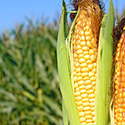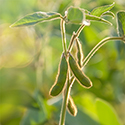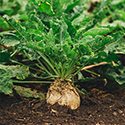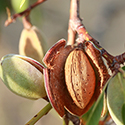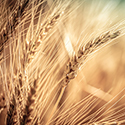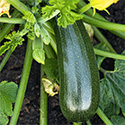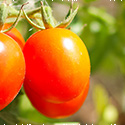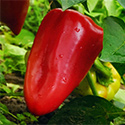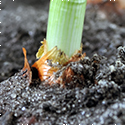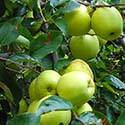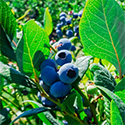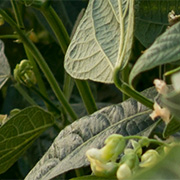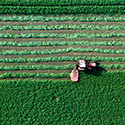Successfully growing cotton
- The United States is the leading exporter of cotton, providing about 35% of the world supply
- U.S. is third in production behind India and China
- Cotton is a sustainable crop, used in 25% of garments produced worldwide. A 480lb. bale of cleaned cotton will make over 1,200 T-shirts.
- Young cotton plants are sensitive to cold weather; cotton in the U.S. is grown in the warm Southern States and California
- Cotton is a member of the Mallow (Malvaceae) Family; it’s short-lived flowers are very colorful and resemble hibiscus.
Growing cotton
- Cotton does not tolerate frost, and growth is severely hampered by cooler weather, especially right after planting
- Planting should be deferred until soil temperature is about 65° Temperature at planting depth should be a minimum 68°F for three consecutive days.
- Earlier planting in cool weather will not give the plants an advantage. Seeds planted in optimum conditions often catch up to earlier plants by flowering time.
- Harvesting cotton by hand is difficult, the bolls are very prickly. Almost all harvesting in the U.S. is done by machine.
- Cotton plants are perennial, but because of their cold intolerance they are grown as annuals in the warm season
- Cotton is harvested into a 20,000 lb. rectangle of pressed cotton called seed cotton
- Seed cotton is processed at a plant still called a gin where it is cleaned and the seeds are separated, leaving the fiber or “cotton lint”. The lint is pressed into 480lb. bales.
- Cotton seed is often processed at the gin into oil and husks used as an additive to livestock feeds
- Because cotton is so susceptible to boll weevil infestation, fungus and other pests, in the 17 U.S. cotton-producing states it is illegal for private individuals to grow cotton without a special waiver.
- While cotton taproots can grow to 9 feet, most root activity is within 3 feet of the surface
- A thermal unit called DD60 is used to monitor warming energy that plants receive, calculated daily by averaging high/low temperature and subtracting 60. Planting is not recommended until the 5-day forecast predicts at least 50 DD60’swill have been accumulated.
The market for cotton
The global cotton market is expected to reach US$46B by 2027 at a CAGR of 2.75%. The US produced almost 20 million bales of cotton in 2019-2020, and is the world’s largest exporter, accounting for about 35% of the world supply. Because the manufacture of cotton into finished goods can be labor-intensive, almost all U.S. cotton is exported. The U.S. is third behind India and China in cotton production, but both of those nations are also substantial consumers of clean cotton.
There are two species of cotton commonly grown commercially; Upland cotton and Pima. Pima fibers are far longer than Upland fibers, and Pima cotton has a different texture. Only 3% of the cotton grown in the U.S. is Pima cotton.
In addition to India and China, Pakistan and Bangladesh are large consumers of clean cotton. Recently Vietnam and Uzbekistan have also become substantial consumers.
Cotton production to finished goods fell in 2019-2020 due to the worldwide contraction. Trade and demand have risen, but production is still down, resulting in higher prices for finished goods. A decline in cotton production in China since 2007 has reversed slightly, perhaps due to China’s new emphasis on a greener economy, favoring cotton over polyester.
Cotton and polyester have competed for market share in finished garments for over 50 years. Cotton is an organic sustainable crop, polyester is derived from fossil fuel byproducts. Cotton’s market price is controlled by demand and a supply dependent on weather and sometimes political conditions. Polyester prices are tied directly to the price of crude oil.
Challenges growing cotton
Cold is the enemy of pre-emergent and post-emergent cotton seedlings. A mid-day soil temperature of greater than 68°F for three days in a row, as well as a five-day forecast calling for an accumulated 50 DD60 units is strongly recommended. Soil temperatures below 50°F can damage pre-emergent seedlings, which can necessitate a complete replanting in some instances.
Pest problems with cotton often originate with weeds in the field or immediate adjacency, and the remains to rotation crops. Accordingly, a pre-emergent “burndown” herbicide is typically administered to control weeds in the field and on the periphery. This can be followed by a systemic insecticide/miticide at planting. Fungal pathogens grow well at 65°F, another good reason to wait for warmer weather. Purchased seeds are usually treated with two or three fungicides depending on the region.
By far the most widely known and devastating pest affecting cotton is the boll weevil, which preys almost exclusively on cotton. The insects eat the young plants and squares (blossoms) and lay their eggs in the squares. The larvae invade the developing cotton bolls and eat the cotton inside. Eradication calls for the aggressive use of powerful systemic pesticides, followed by continuous monitoring of plant health and spot treatments with herbicide as necessary. Boll weevils reproduce rapidly and can destroy entire crops in very little time without continuous diligence.
Contact AquaSpy
AquaSpy for cotton
With a Crophesy annual subscription, you receive a free simple, three-sensor, wireless, soil moisture probe. Place these rugged, water-tight probes throughout your cottonfield and connect them to the app via your smartphone.
Then you can instantly monitor soil and crop health for all of your cotton. And if you want to test the soil in other areas, you can quickly and easily move the moisture probe, which is battery-powered and provides season-long insight.
While you can look at the visual analysis of leaves, spending hours in your field, Crophesy enables you to open your app from anywhere and show you what kind of nourishment is available in your soil at your cotton crop root depth. With this data, you can determine when the active root zone needs vital nutrients.
In addition to nutrient data, the Crophesy app can show you:
- Moisture consumption at the root level
- Salinity level in the active root zone
- Root depth
- Soil temperature near the sensors
- Irrigation depth
And it tells you all this without you having to step foot in your cotton field.


